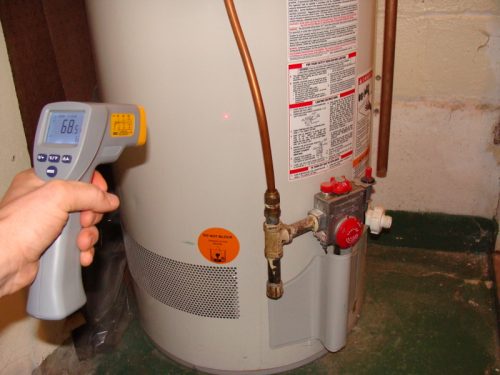If you’re a Minnesota homeowner with a water heater that isn’t a dinosaur, you don’t need an insulation blanket. Many generations of water heaters ago, insulation blankets helped to retain some of the heat that water heaters would lose through poorly insulated tanks, but today’s water heaters are insulated well enough to not need extra insulation. The US Department of Energy recommends installing an insulation blanket if the insulation value of your water heater is less than R-24, but they also say that if you don’t know the R-Value, touch the outside of your water heater. If it’s hot, you should insulate it.
I did some research on my own water heater, which is a 2005 GE 50 gallon (manufactured by Rheem). From everything I’ve read, this water heater has an insulating value of somewhere between R-8 and R-16. I have the temperature set so the water comes out at 120 degrees, which is as hot as you should have your water heater set to prevent scalding. As you can see from the photo below, the outside temperature of the tank is at about 68 degrees, and the temperature in the room is about 66 degrees. According to my test, and according to the manufacturers recommendations (Rheem, AO Smith), an insulation blanket is not necessary.
If you have an old water heater that actually does get warm to the touch at the exterior, be very careful installing the insulation. Most water heaters are gas fired, and there are many areas that need to be left uncovered; the warning labels, the top of the water heater, the pressure relief valve, the control and access panel, and any bottom air inlets. Out of all the water heaters that I’ve seen that have been insulated, not one has followed these instructions; the warning labels are always covered, the pressure relief valves are almost always covered, and the tops of the water heaters are frequently covered.
The bottom line is that insulation blankets for water heaters are mostly a thing of the past, are difficult to install properly, and are generally not recommended. Here in Minnesota water heaters are installed inside the thermal envelope of the home, so our water heaters aren’t subjected to extreme temperatures.
Reuben Saltzman, Structure Tech Home Inspections – Email – Minneapolis Home Inspections

